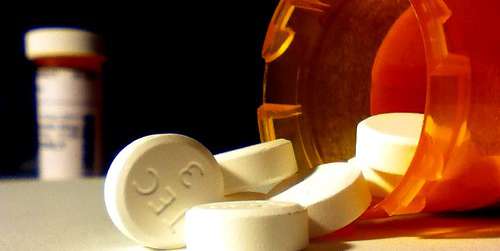
Integrating UV absorbers in plastic pharmaceutical packaging is critical to protecting photoreactive medications from photodecomposition. Image Source: Flickr user Brandon Giesbrecht
The creation of medications is a delicate art requiring precise chemical combinations to optimize drug efficacy. In many cases, however, the initial drug formulation is only half of the equation; protecting medications from environmental interferences that compromise the integrity of the drug is critical to ensuring the delivery of safe, effective pharmacological therapies. One of the key points of vulnerability for many medications is photoreactivity, whereby optical radiation caused by certain types of light changes the chemical structure of the drug, resulting in photodecomposition. As pointed out by the Royal Society of Chemistry, “The most obvious result … is a loss of potency of the product [and] in the final consequence this can result in a drug product that is therapeutically ineffective.”1
Although some drugs are reactive to light on the visible spectrum, UV light is the primary culprit in most pharmaceutical photodecomposition and can significantly impair drug stability. This type of photoreactivity is uniquely difficult to guard against, as UV radiation is a product of not only sunlight, but common artificial light sources in factories, pharmacies, hospitals, and patients’ homes. The need to protect light-sensitive pharmaceuticals during storage has spurred the development of specialized light-resistant polymers that use advanced UV absorbers to shield vulnerable medications from UV damage. Spectral analysis using spectrophotometric instrumentation allows pharmaceutical packaging manufacturers to accurately evaluate the efficacy of UV absorbent packaging, preserving pharmaceutical quality and protecting patient health.
While sunlight presents an obvious threat to photoreactive medications, even some types of artificial light can damage vulnerable drugs.
Image Source: Unsplash user Josh Byers


